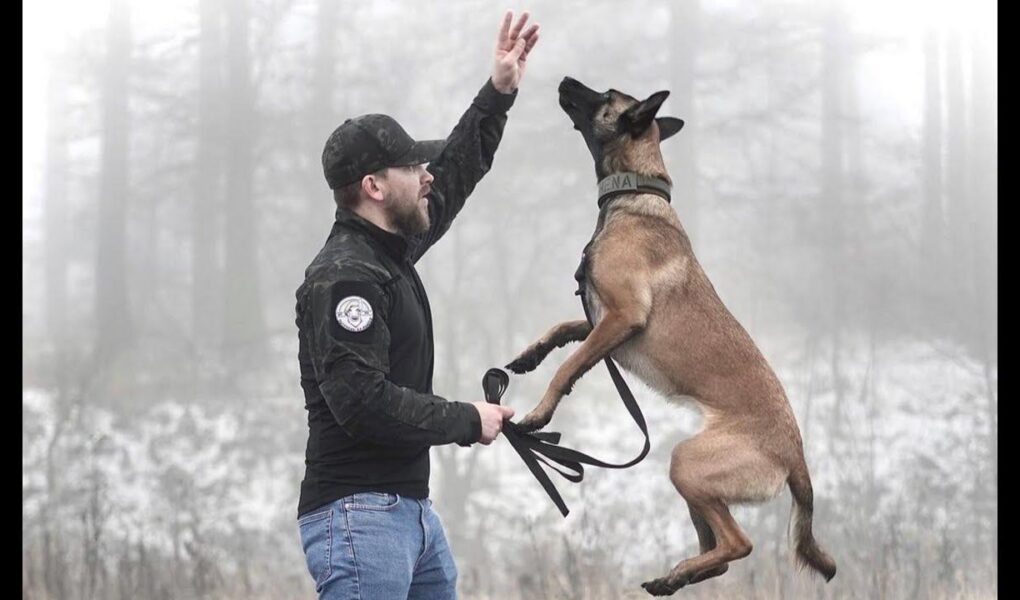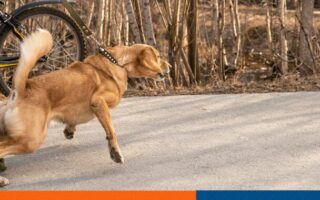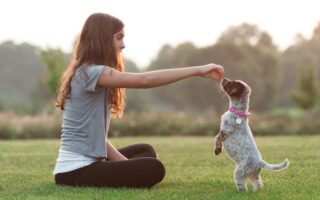Unlocking the Potential: A Guide to Malinois Training
In the world of canine companions, few breeds command as much admiration—and challenge—as the Belgian Malinois. With their sleek coats, intelligent eyes, and boundless energy, these dogs are often seen bounding agilely through training courses, their keen instincts turning mundane tasks into extraordinary performances. But what goes into cultivating the incredible talents that these working dogs naturally possess? Whether you’re a seasoned trainer or a proud Malinois owner eager to harness your dog’s potential, understanding the unique nuances of Malinois training is essential. In this article, we will explore effective training methods, delve into breed-specific traits that influence behavior, and uncover the tools you need to foster a strong bond with your canine partner, ensuring that both of you thrive in the journey ahead. Get ready to unlock the extraordinary capabilities of your Malinois, as we embark on this comprehensive guide to training and connection.
Table of Contents
- Understanding the Malinois Temperament for Effective Training
- Essential Training Techniques Tailored to Malinois Characteristics
- Building a Strong Bond Through Positive Reinforcement
- Addressing Common Behavioral Challenges in Malinois Training
- Q&A
- Concluding Remarks
Understanding the Malinois Temperament for Effective Training
When it comes to training the Belgian Malinois, understanding their unique temperament is essential for success. This breed is known for its high energy levels, intelligence, and strong work ethic. Consequently, they thrive in environments that offer both physical exercise and mental stimulation. Since Malinois dogs are naturally inclined to herd and protect, they possess an innate desire to engage in activities that challenge their capabilities. Effective training strategies harness these traits, allowing owners to channel their dog’s energy positively. Consequently, it is vital to incorporate various training techniques that not only maintain the dog’s interest but also promote a solid bond between the owner and the dog.
To foster a productive training environment, consider these key aspects of the Malinois temperament:
- High Intelligence: Quick learners who enjoy tasks and challenges.
- Strong Bonding: Highly loyal, requiring consistent attention and affection.
- Protection Instincts: Naturally protective, which can be harnessed for specialized training.
- Active Lifestyle: Needs daily physical and mental exertion to avoid behavioral issues.
Incorporating positive reinforcement, various training exercises, and ample socialization opportunities will create a well-rounded training experience. Understanding and respecting the Malinois’s temperament is key to shaping a competent and confident companion that excels both in training sessions and everyday life.
Essential Training Techniques Tailored to Malinois Characteristics
The Malinois is an intelligent and energetic breed, which means that training techniques should be both engaging and challenging. One effective method is to incorporate positive reinforcement, rewarding desired behaviors with treats, praise, or playtime. This approach not only strengthens the bond between the trainer and the dog but also helps the Malinois associate learning with pleasurable experiences. Consider utilizing clicker training to enhance focus and clarity in commands. The sharp sound of the clicker serves as a clear marker for the dog, allowing for quicker understanding of what behavior is being rewarded.
In addition to reward-based strategies, it’s crucial to match the training exercises with the Malinois’s natural tendencies. Activities that stimulate their mind and body, such as agility courses, nose work, and obedience tasks, can keep them engaged and tire them out mentally. Setting up a structured schedule that includes varied activities will prevent boredom and misbehavior stemming from excess energy. Below is a simple table outlining engaging exercises suitable for Malinois:
| Activity | Description |
|---|---|
| Agility Training | Navigate through obstacles to improve coordination and focus. |
| Nose Work | Engage their natural scenting abilities through search games. |
| Basic Obedience | Teach commands like sit, stay, and come for foundational training. |
Building a Strong Bond Through Positive Reinforcement
Establishing trust and a strong connection with your Malinois is essential for effective training. Positive reinforcement plays a pivotal role in this process, as it encourages desired behaviors while fostering a harmonious relationship between you and your canine companion. With each accomplishment, whether big or small, your Malinois will start associating training sessions with joy and rewards. To enhance this bond, focus on the following techniques:
- Treats: Use high-value treats that your dog craves to reward good behavior.
- Praise: Verbal affirmations and gentle pats reinforce positive actions.
- Playtime: Incorporate favorite toys or games as a reward for achieving training goals.
In addition to these rewards, maintaining consistency is crucial. By establishing a clear set of expectations and routines, your Malinois will feel secure in understanding what is required of them. This consistency paired with positive reinforcement can lead to a remarkable transformation in behavior and learning. To illustrate how to effectively implement this method, consider the following comparison:
| Behavior | Positive Reinforcement Strategy |
|---|---|
| Coming when called | Offer a treat and enthusiastic praise. |
| Sitting on command | Reward with affection and a favorite toy. |
| Walking nicely on a leash | Provide verbal praise and occasional treats. |
Addressing Common Behavioral Challenges in Malinois Training
Training a Malinois can be a rewarding yet challenging endeavor, especially when addressing common behavioral issues like hyperactivity, destructiveness, and passing distractions. These dogs are known for their intelligence and energy, which means they require not only physical stimulation but also mental engagement. Incorporating structured activities, such as agility courses and scent work, can channel their energy positively. Consistency is key; establishing a daily routine that includes training sessions, exercise, and downtime helps mitigate unwanted behaviors. Additionally, utilizing positive reinforcement techniques, such as treats and praise, encourages desirable behaviors while building a strong bond between the handler and the dog.
When encountering specific challenges like excessive barking or jumping on guests, it’s important to employ targeted strategies. Training your Malinois to understand a “quiet” command can significantly reduce nuisance barking. For managing excitement around visitors, teaching a solid “stay” or “place” command can provide the control needed to prevent jumping. Below is a simple reference table summarizing these strategies:
| Behavior Challenge | Training Solution |
|---|---|
| Excessive Barking | Teach a “quiet” command with positive reinforcement. |
| Jumping on Guests | Train “stay” or “place” to manage excitement. |
| Destructive Chewing | Provide suitable chew toys and supervise closely. |
Q&A
Q&A: Mastering the Art of Malinois Training
Q1: What makes the Belgian Malinois a unique breed for training?
A: The Belgian Malinois is renowned for its intelligence, agility, and high energy levels, making it one of the most trainable breeds around. Originally bred for herding, these dogs are not only physically adept but also possess a keen desire to work and please their handlers. Their strong drive for tasks, coupled with their protective instincts, makes them ideal candidates for various roles, including search and rescue, police work, and competitive sports.
Q2: At what age should training begin for a Malinois?
A: Training can begin as early as eight weeks old. Early socialization and basic obedience training are crucial during the puppy stage, as they help instill good behavior and prevent potential behavioral issues. The first six months are especially formative, so it’s essential to expose your Malinois to various environments, people, and other animals.
Q3: What are some effective training methods for Malinois?
A: Positive reinforcement is the most effective training method for Malinois. This involves rewarding desired behaviors with treats, praise, or playtime. Since they are highly motivated by rewards, using clicker training can also be beneficial. Consistency, patience, and practice are key components; these dogs thrive when they know what is expected of them and when there are clear rewards for their efforts.
Q4: How do I keep a Malinois engaged during training?
A: Keeping training sessions short yet challenging is essential for maintaining their focus. Malinois have incredible stamina and a natural instinct for problem-solving, so incorporating agility exercises, puzzle toys, and scent work can provide the mental stimulation they crave. Varying the training activities and introducing new challenges keeps them engaged and excited to learn.
Q5: What common challenges might I face while training a Malinois?
A: Given their intelligence and energy level, some Malinois may exhibit stubbornness or distractibility if they are not adequately engaged. Impulsivity can also lead to jumping or barking if they become bored. Therefore, it’s essential to establish a structured training routine that challenges them mentally and physically. If issues arise, consulting with a professional trainer can help tailor a strategy suited to your dog’s specific needs.
Q6: Are there any specific activities that a Malinois excels in?
A: Absolutely! Belgian Malinois excel in various activities, including agility, obedience competitions, protection work, and herding trials. Their natural athleticism and intelligence make them outstanding candidates for dog sports like flyball and nose work. Engaging them in these activities not only allows them to utilize their innate skills but also strengthens the bond between dog and handler.
Q7: How important is socialization for a Malinois?
A: Socialization is critical for Malinois. Due to their protective nature, early and continued exposure to different environments, people, and animals can help them become well-rounded dogs. Regularly introducing them to various stimuli eases potential anxiety and fearfulness, ensuring they remain confident and adaptable in diverse situations.
Q8: What should I do if my Malinois does not respond to training?
A: If your Malinois isn’t responding to training, it could be due to a lack of motivation, distractions in the environment, or inconsistency in training practices. Reassess the training methods being used and ensure they are appropriate for your dog’s learning style. It may be beneficial to consult a professional dog trainer or behaviorist for tailored advice and techniques suited specifically for your Malinois.
End Note: Training a Belgian Malinois can be a rewarding experience, given their intelligence and eagerness to work. With patience, understanding, and creativity, you can cultivate a strong, positive relationship with your canine companion that lasts a lifetime.
Concluding Remarks
training a Malinois is not just an undertaking; it is a journey of partnership and mutual understanding. These remarkable dogs, with their intelligence and agility, thrive on the challenges and rewards of structured training. Whether you are introducing basic commands or venturing into advanced obedience and agility work, the key lies in consistency, patience, and positive reinforcement. As you embark on this path, remember that fostering a strong bond with your Malinois is as vital as the skills you aim to teach. Embrace the learning experience, celebrate the small victories, and watch as your Malinois transforms into a loyal companion and a skilled partner. With dedication and love, you will not only cultivate a well-trained dog but also create a lasting relationship that enriches both your lives. Happy training!



